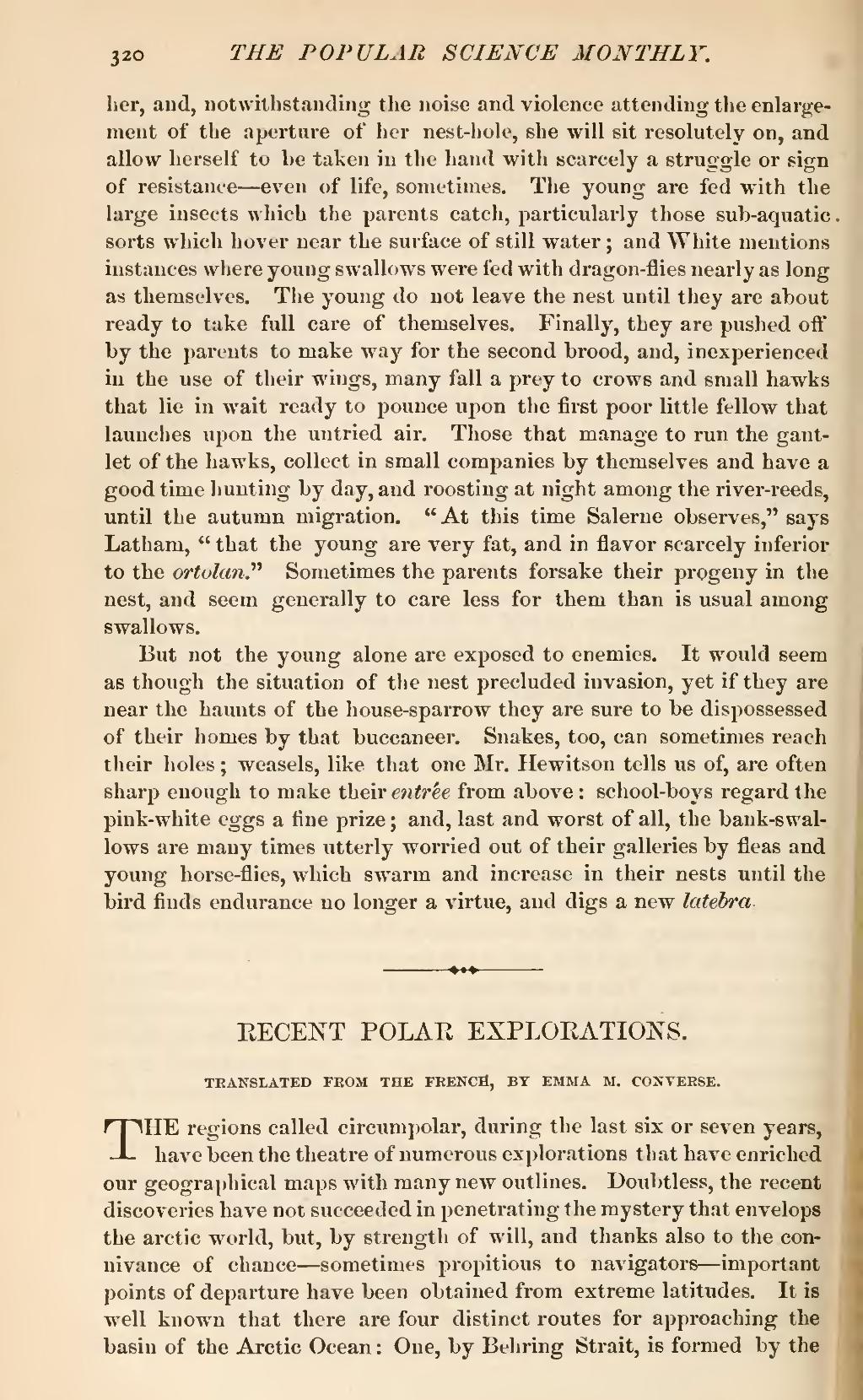her, and, notwithstanding the noise and violence attending the enlargement of the aperture of her nest-hole, she will sit resolutely on, and allow herself to be taken in the hand with scarcely a struggle or sign of resistance—even of life, sometimes. The young are fed with the large insects which the parents catch, particularly those sub-aquatic . sorts which hover near the surface of still water; and White mentions instances where young swallows were fed with dragon-flies nearly as long as themselves. The young do not leave the nest until they are about ready to take full care of themselves. Finally, they are pushed off by the parents to make way for the second brood, and, inexperienced in the use of their wings, many fall a prey to crows and small hawks that lie in wait ready to pounce upon the first poor little fellow that launches upon the untried air. Those that manage to run the gantlet of the hawks, collect in small companies by themselves and have a good time hunting by day, and roosting at night among the river-reeds, until the autumn migration. "At this time Salerne observes," says Latham, "that the young are very fat, and in flavor scarcely inferior to the ortolan." Sometimes the parents forsake their progeny in the nest, and seem generally to care less for them than is usual among swallows.
But not the young alone are exposed to enemies. It would seem as though the situation of the nest precluded invasion, yet if they are near the haunts of the house-sparrow they are sure to be dispossessed of their homes by that buccaneer. Snakes, too, can sometimes reach their holes; weasels, like that one Mr. Hewitson tells us of, are often sharp enough to make their entrée from above: school-boys regard the pink-white eggs a fine prize; and, last and worst of all, the bank-swallows are many times utterly worried out of their galleries by fleas and young horse-flies, which swarm and increase in their nests until the bird finds endurance no longer a virtue, and digs a new latebra.
| RECENT POLAR EXPLORATIONS. |
TRANSLATED FROM THE FRENCH, BY EMMA M. CONVERSE.
THE regions called circumpolar, during the last six or seven years, have been the theatre of numerous explorations that have enriched our geographical maps with many new outlines. Doubtless, the recent discoveries have not succeeded in penetrating the mystery that envelops the arctic world, but, by strength of will, and thanks also to the connivance of chance—sometimes propitious to navigators—important points of departure have been obtained from extreme latitudes. It is well known that there are four distinct routes for approaching the basin of the Arctic Ocean: One, by Behring Strait, is formed by the

